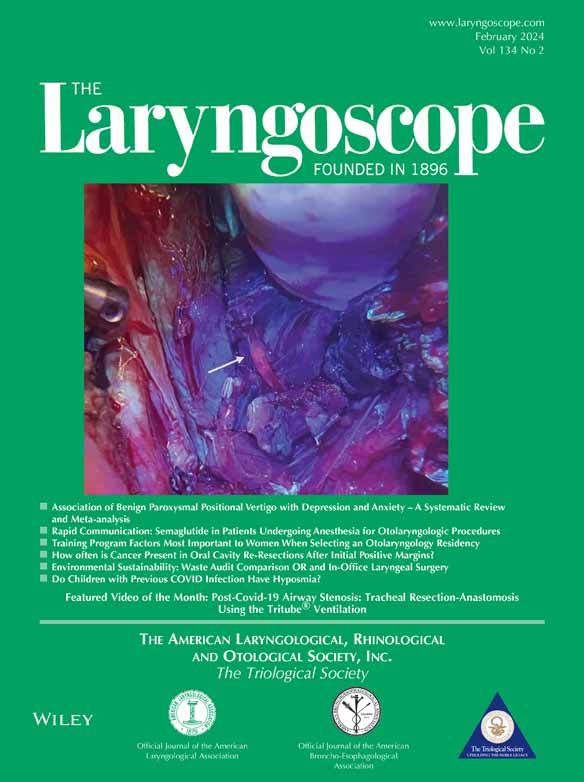Early Improved Functional Outcomes in Head and Neck Cancer Patients with Primary Tumor Detection
2023 Triological Society Combined Sections Meeting, Coronado, CA; January 26–28, 2023.
The authors have no funding, financial relationships, or conflicts of interest to disclose.
Abstract
Objectives
We characterize functional outcomes in head and neck cancer of unknown primary (CUP) based on primary site identification.
Methods
In this retrospective study, CUP cases were categorized as known primaries (KP) if a tumor was localized after diagnostic workup or persisting unknown primaries (UP). Age, sex, HPV status, diagnostic methods, and treatments regimens were collected. Pretreatment and short-term posttreatment (3–6 months after completion of treatment) weights, PHQ-9, Eating Assessment Tool (EAT-10), and Voice Handicap Index (VHI-10) scores were compared between UP and KP.
Results
Among 67 CUP patients, 35 (52.2%) had identified primaries (91.4% oropharyngeal and 8.6% nasopharyngeal). KP patients were younger (58 vs. 64, p = 0.04) and more likely to be HPV-positive (88.6% vs. 50%, p = 0.002). Overall detection rates were 16.7% for PET/CT, 34.7% for direct laryngoscopy, and 46.6% for transoral robotic oropharyngectomy. Diagnostic workup was not significantly different between groups. Patients with KP received smaller intermediate radiation dose volumes (436.5 vs. 278.9 cc, p = 0.03) and lower doses to the cricopharyngeal muscle (41.6 vs. 24.6 Gy, p = 0.03).Pretreatment weights, PHQ-9, EAT-10, and VHI-10 scores did not differ between groups. However, posttreatment, UP had greater relative weight loss (−14.1% vs. −7.6%, p = 0.032), higher EAT-10 scores (12.5 vs. 3, p = 0.004), and higher PHQ-9 scores (6 vs. 1.4, p = 0.017). Specifically, UP reported more stressful swallowing, difficulty swallowing solids and pills, and swallowing affecting public eating.
Conclusion
KP patients experienced less weight loss, depression, and reduced swallowing dysfunction, highlighting an early functional benefit of primary tumor identification likely driven by reduced radiation treatment volumes.
Level of Evidence
4 Laryngoscope, 134:701–707, 2024




